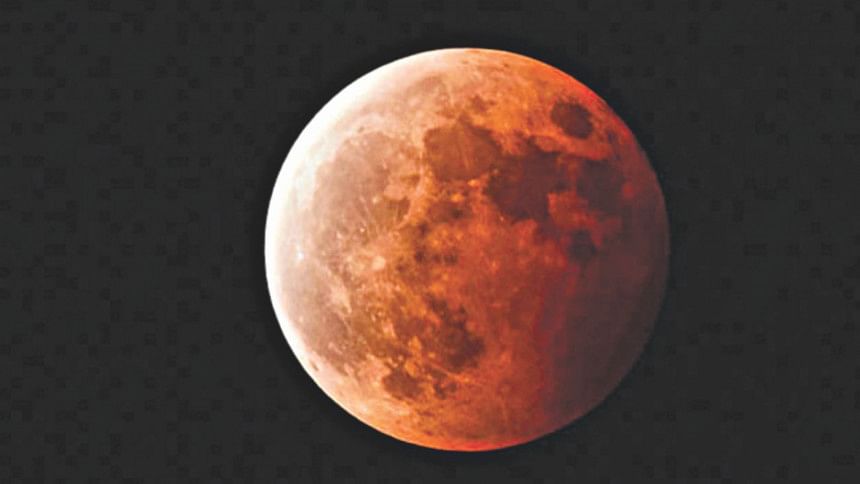'Blood Moon', Mars offer celestial show

The longest "blood moon" eclipse this century coincided with Mars' closest approach in 15 years yesterday to offer skygazers a thrilling astronomical double bill.
Viewers needed no protective eye gear to observe the spectacle -- unlike when watching solar eclipse.
For about half the world, the moon remained partly or fully in Earth's shadow from 1714 to 2328 GMT -- six hours and 14 minutes in all.
The period of complete eclipse -- known as "totality", when the moon appears darkest -- lasted from 1930 to 2113 GMT.
At the same time, Mars hovered near the moon in the night sky, easily visible with the naked eye.
Our neighbouring planet appeared unusually large and bright, a mere 57.7 million kilometres (35.9 million miles) from Earth on its elliptical orbit around the sun.
"We have a rare and interesting conjunction of phenomena," Pascal Descamps, an astronomer with the Paris Observatory, told AFP.
Amateur astronomers in the southern hemisphere enjoyed the spectacle thoroughly, especially those in southern Africa, Australia, India and Madagascar, though it was partly visible in Europe and South America.
Royal Astronomical Society earlier said, "If you want a close-up view of the moon as it turns red, a pair of binoculars is helpful."
A total lunar eclipse happens when Earth takes position in a straight line between the moon and sun, blotting out the direct sunlight that normally makes our satellite glow whitish-yellow.
The moon travels to a similar position every month, but the tilt of its orbit means it normally passes above or below the Earth's shadow -- so most months we have a full moon without an eclipse.
When the three celestial bodies perfectly lined up, however, the Earth's atmosphere scattered blue light from the sun while refracting or bending red light onto the moon, usually giving it a rosy blush.
Nasa, meanwhile, has called out social media hoaxers claiming that Mars will appear as big as the moon during the eclipse.
"If that were true, we'd be in big trouble given the gravitational pulls on Earth, Mars, and our moon!" the Nasa website states.
Mars appeared as a very bright star. "All eclipses are spectacular," the Royal Astronomical Society's Robert Massey said.

 For all latest news, follow The Daily Star's Google News channel.
For all latest news, follow The Daily Star's Google News channel. 



Comments